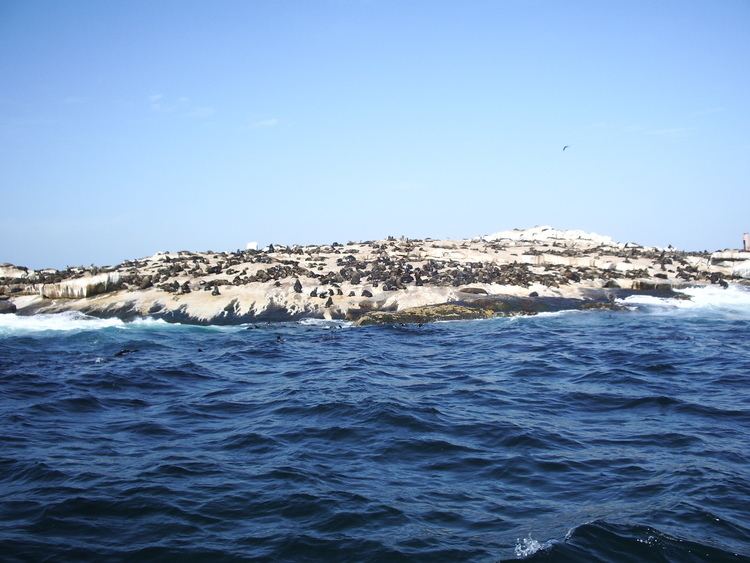 | ||
Similar Duiker Island, Boulders Beach, Cape Point, Kirstenbosch National Botanical, Cape Peninsula | ||
Seal Island is a small land mass located 5.7 kilometres (3.5 miles) off the northern beaches of False Bay, near Cape Town, in South Africa. The island is so named because of the great number of Cape fur seals that occupy it. It is 5 acres (2.0 hectares) in area and home to 64,000 cape fur seals. It is home to seabirds too and it is likely that non-marine species (in no great number) fly there to breed as well (see external link to the Avian Demographic Unit at the University of Cape Town). The island is an outcrop of the Cape granite and rises no more than about four to six metres above the high tide mark. The island is long and narrow- 800 metres by 50 metres. There is no vegetation or soil of any significance and no beach. A radar mast was built on the island during World War II by a crew who lived in prefabricated huts for the duration of the construction but this tower gradually succumbed to corrosion and was blown over in a winter storm in 1970. All that remains of it is rusty, twisted metal. There are the ruins of a few huts and other structures from the sealing and guano-collection era (first half of the 20th century). Some rock inscriptions made by sealers in the 1930s are still evident.
Contents
Map of Seal Island, South Africa
Great white sharks
The dense population of seals at certain times of the year attracts the seal's main predator, the great white shark. Seal Island and the adjacent waters provide rare opportunities for those who wish to witness attacks by great whites on the Cape fur seal and to observe social interactions amongst creatures of both species. The island is well known for the interesting way the sharks grab their prey: a shark launching an attack will come up from underneath and hurl itself out of the water with the seal in its mouth. It has been shown that if the seals enter the "Ring of Death" (where the sharks circle the island) on the surface instead of at the murky bottom, they are more likely to be picked off by the faster and more aggressive great white.
